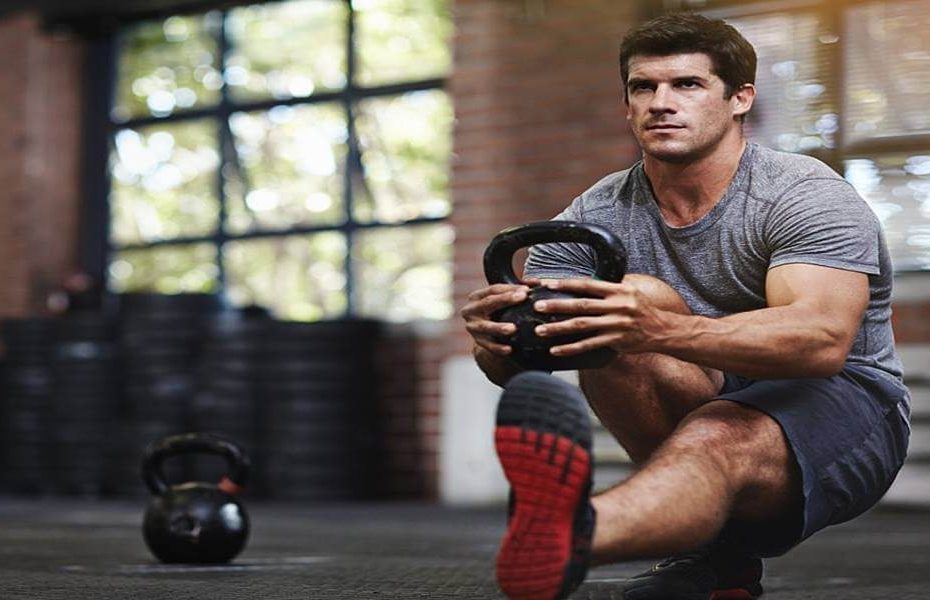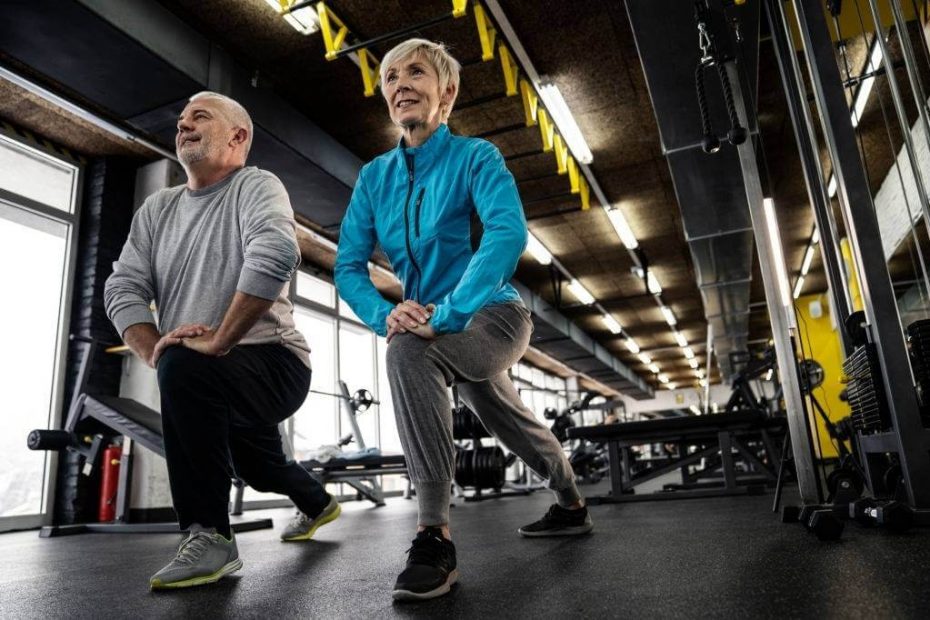The good balancing skills require many muscles control to carry out activities without you fall. These balance and coordination skills include hand-eye coordination, bilateral coordination, and smooth, controlled body movements.

In this post, we will show you exercises that help improve balance and coordination.
Exercises to Improve Balance
Here are 10 perfect examples of exercises to maintain or improve balance or stability. This is especially important for older adults, who may be at higher risk for falls and injuries.
Balance on One Leg
Raise one knee to the hip, bend at a 90-degree angle. Keep it there for as long as possible. Time when you can keep your balance.
Be careful not to let your legs touch each other. If you prefer, hold on to the back of a chair as you lift your leg, then slowly remove your hand to see how long you can hold the position.
Balance on One Leg (Soft Base)
This exercise is the same as the previous example on one leg, except that we must do it on a soft surface, such as a pillow.
Try to balance yourself with your eyes closed, with or without the unstable surface. You could also try grabbing a nearby object, balancing to make it more difficult.
Balance on Hands and Knees
Lower your hands and knees onto a gym mat or folded blanket. Stretch one hand in front of you and stretch your opposite leg back into the air behind you.
Twist Jumps
From a standing position, do a static jump and turn 90 degrees to land neatly, without losing your balance. Increase the turning degree to 180 degrees or 360 degrees without losing your landing balance.
Barbell Balance Exercises
A low balance beam can be made from a row of bricks or a thick plank of wood stretched between two bricks or chairs. Start by walking back and forth along the bar.
Increase demand by balancing a book or other similar item on your head as you do so, or by bending and picking up items as you walk.
Obstacle Course
Set up an obstacle course that has a balance beam, a stretch of space to run, and markers to change direction. It includes a space for a mat and performs cartwheels forwards or backwards. Measure the time as you complete the obstacle course and try to improve your time without losing your balance. Take the obstacle course from a different direction to add interest.
Hopscotch
Draw a hopscotch square on the ground, as long or as complex as you like. Try different combinations of jumps and jump through the various squares without touching any of the lines. Mix a book or similar item into a square or two and avoid those squares as you jump. Hopscotch is the typical game that we played as children with numbers.
Ball Exercises A
Simple games, standing on a pillow throw a ball in the air or on the wall and then catch it again without moving from the pillow.
Ball Exercises B
Sit on an exercise ball (fit ball) on a mat and put your arms out to the sides for balance. Carefully lift one foot off the ground, keeping your balance. Go down and repeat with the other foot.
Heel to Toe Exercises
Do toe-heel along a line marked on the ground along a length of rope. Keep your feet straight from heel to toe, catch a ball thrown by a friend, or throw a ball against a wall and catch it again. Bending your knees can help you balance while catching the ball.
Also try lifting one foot to stretch and set objects aside and then return to heel to toe position.
Balance Exercises for Seniors
Balance exercises for the elderly and the elderly can help with old age dizziness and increase the safety and confidence of the elderly.
Many older people experience dizziness (vertigo) and the associated headaches, nausea, and palpitations. Dizziness leads to insecurity and increases the risk of older people tripping and seriously injuring themselves.
To achieve a certain security in everyday life even in old age, there are some good balance exercises for older people.
Around the age of 60, the first restrictions on the sense of balance appear and at the same time reactions slow down. The strength in the legs is lower, so the so-called speed strength must be trained.
This means training your strength in such a way that you react quickly and with enough force so as not to fall in the event of stumbling, such as carpet edges or steps.
To be safe, the following balance exercises for seniors should be done under supervision. The exercises are marked with a level of difficulty:
- Easy = *
- Medium = **
- Difficult = ***
Exercise 1: Move your upper body back and forth, whether you are lying on the floor, in bed, or on the couch. Easy = *
Exercise 2: lying down, pull your legs and feet towards the body and stretch them again. Medium = **
Exercise 3: lying down or sitting, pull the arms and hands towards the body and stretch them. Easy = *
Exercise 4: clench your fists and open them. Little exercise balls (hedgehog balls) help here. This exercise can be done well in pairs, as the second person takes the ball and returns it to the other hand. Easy = *
Exercise 5: balance standing from one leg to the other, at first you should hold onto an object (chair, table, wall, door) with one hand. Medium = **
Exercise 6: two people stand on one leg and hold hands. Now gently pull and push each other’s hands. Difficult = ***
Exercise 7: Stand on one leg. With the other leg, draw light movements and signs in the air. Circles, points or lines are suitable for this. In the advanced version you can do this exercise with your eyes closed. Difficult = ***
Exercise 8: Squat with arms extended, a second person must be present to be safe. Difficult = ***
Exercise 9: With your eyes closed, juggle a light object with your hands. This exercise can be extended after specific training. For example, objects can gradually become heavier. Difficult = ***
Exercise 10: Standing straight with your legs extended, stretch your arms up, clasp your hands above your head. Repeat a few times. Medium = **
What Is the Best Workout for Greater Balance?
In this small update we are going to focus on what balance is more specifically. Balance is the condition during which the body’s center of gravity remains within its base of support; the steady state, which is based on:
- Position of the center of gravity in relation to the support base
- Direction of forces
- Support base
There are three ways that help maintain balance, and they are:
- Eyes
- Ears
- Nervous system
Core muscle training is vital for athletes, bodybuilders, and fitness enthusiasts. Whether running, lifting, or performing upper / lower body activities, the power in each movement is generated from the core.
The obtaining sufficient core strength increases the stability of the pelvis and spine, which improves balance during athletic movements and bodybuilding.
So, if you are looking for additional performance in sports, bodybuilding, or any activity, read on to learn about balance training.
Anatomy Within Balance
To get the maximum balance from your workout, you need to know what your core muscles are, where they are, and how they work.
- Abdominal recto
- External oblique
- Internal oblique
- Transverse abdominal
Spinal erectors:
- iliocostal
- very long
- Spinous muscle
Hip joint:
- Tensor fascia late muscle
- Gluteus maximus
- medium
- less
How Often Should You Work to Increase Balance?
We must strive to increase balance throughout the year, cycling training routines. For example, every 8-12 weeks, one can perform a balance training for 4 weeks.
The reason you need to cycle your workouts is so the body doesn’t adapt to the training and you come to a standstill. Variety in your workouts can even speed up your progress and get you closer to your goals.
Positive Reasons Why You Should Work to Improve Your Balance
Best Performance:
The improvement in the balance increase performance in all sports and in almost all activities. With a combination of strength, endurance, and balance, an athlete can tremendously excel in their sport.
Increase strength:
They can increase core strength with balance training, throughout which it helps with body movements such as squats and deadlifts.
Borderline injury:
Millions of people around the world suffer from low back pain or postural deficiencies. The reason is the lack of balance and core strength.
Balance-focused workouts can limit injuries and correct posture problems.












